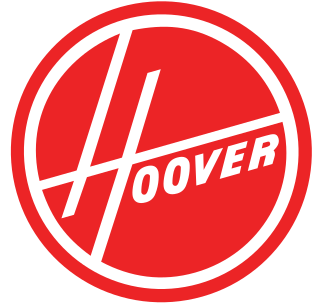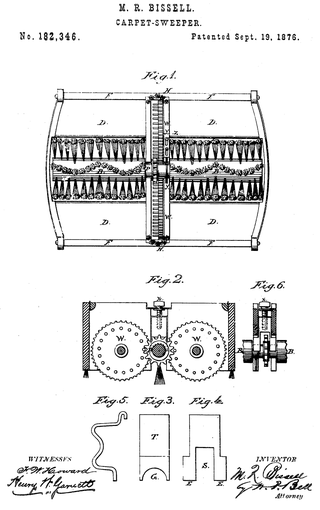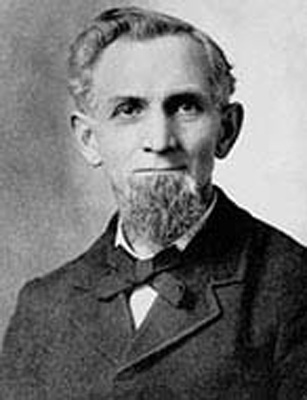
A pump is a device that moves fluids, or sometimes slurries, by mechanical action, typically converted from electrical energy into hydraulic energy.

A steam engine is a heat engine that performs mechanical work using steam as its working fluid. The steam engine uses the force produced by steam pressure to push a piston back and forth inside a cylinder. This pushing force can be transformed, by a connecting rod and crank, into rotational force for work. The term "steam engine" is most commonly applied to reciprocating engines as just described, although some authorities have also referred to the steam turbine and devices such as Hero's aeolipile as "steam engines". The essential feature of steam engines is that they are external combustion engines, where the working fluid is separated from the combustion products. The ideal thermodynamic cycle used to analyze this process is called the Rankine cycle. In general usage, the term steam engine can refer to either complete steam plants, such as railway steam locomotives and portable engines, or may refer to the piston or turbine machinery alone, as in the beam engine and stationary steam engine.

A vacuum cleaner, also known simply as a vacuum, or a hoover, is a device that uses suction in order to remove dirt and other substances from floors, upholstery, draperies, and other surfaces. It is generally electrically driven.
A vacuum ejector, or simply ejector is a type of vacuum pump, which produces vacuum by means of the Venturi effect.

The Hoover Company is a home appliance company founded in Ohio, United States, in 1915. It also established a major base in the United Kingdom; and, mostly in the 20th century, it dominated the electric vacuum cleaner industry, to the point where the Hoover brand name became synonymous with vacuum cleaners and vacuuming in the United Kingdom and Ireland. Hoover North America was once part of Maytag, but was sold by Maytag's new owners Whirlpool Corporation in 2007 to Hong Kong multinational manufacturing company Techtronic Industries for $107 million. Hoover International had already split from Hoover North America in 1993, and was acquired by Candy in 1995, which was acquired by Haier in 2019.
Steam power developed slowly over a period of several hundred years, progressing through expensive and fairly limited devices in the early 17th century, to useful pumps for mining in 1700, and then to Watt's improved steam engine designs in the late 18th century. It is these later designs, introduced just when the need for practical power was growing due to the Industrial Revolution, that truly made steam power commonplace.

An injector is a system of ducting and nozzles used to direct the flow of a high-pressure fluid in such a way that a lower pressure fluid is entrained in the jet and carried through a duct to a region of higher pressure. It is a fluid-dynamic pump with no moving parts except a valve to control inlet flow.
Kirby Opco, LLC, doing business as The Kirby Company, is a manufacturer of vacuum cleaners, home cleaning products and accessories, located in Cleveland, Ohio, United States. It is a division of Right Lane Industries. Dealers, sales reps, service centers, and distributors are located in over 50 countries. Kirby Vacuums are sold via door-to-door or though arranged-scheduled in-home demonstrations via their website and the company is a member of the Direct Selling Association, the Kirby website can also take vacuum cleaner orders and ship directly to the customer as well, without having to arrange for a scheduled an in-home demonstration. All Kirby Vacuum Cleaners are built in both Edgewater, Cleveland, Ohio and Andrews, Texas, United States

A carpet sweeper is a mechanical device for the cleaning of carpets. They were popular before the introduction of the vacuum cleaner and have been largely superseded by them. However, they continue to be used in many home and commercial applications because they are lightweight and quiet, enabling users to quickly clean small messes up from the floor without disturbing patrons, patients, babies and pets, and because they do not require electricity to operate.

An automated pool cleaner is a vacuum cleaner that is designed to collect debris and sediment from swimming pools with minimal human intervention.
David T. Kenney was an inventor with nine patents, granted between 1903 and 1913, applicable to both machine-driven and manual vacuum cleaners, dominated the vacuum cleaner industry in the United States until the 1920s.

SEBO is the brand name of vacuum cleaners made by Stein & Co GmbH, a company based in the German town of Velbert. They produce a range of upright and cylinder vacuum cleaners for domestic and commercial use. Sebo vacuum cleaners are endorsed by Allergy UK. Sebo stands for SEmigewerbliche BOdenpflege, German for semi-commercial floor care.

Hubert Cecil Booth was an English engineer, best known for having invented one of the first powered vacuum cleaners.

The first recorded rudimentary steam engine was the aeolipile mentioned by Vitruvius between 30 and 15 BC and, described by Heron of Alexandria in 1st-century Roman Egypt. Several steam-powered devices were later experimented with or proposed, such as Taqi al-Din's steam jack, a steam turbine in 16th-century Ottoman Egypt, Denis Papin's working model of the steam digester in 1679 and Thomas Savery's steam pump in 17th-century England. In 1712, Thomas Newcomen's atmospheric engine became the first commercially successful engine using the principle of the piston and cylinder, which was the fundamental type of steam engine used until the early 20th century. The steam engine was used to pump water out of coal mines.

A reciprocating pump is a class of positive-displacement pumps that includes the piston pump, plunger pump, and diaphragm pump. Well maintained, reciprocating pumps can last for decades. Unmaintained, however, they can succumb to wear and tear. It is often used where a relatively small quantity of liquid is to be handled and where delivery pressure is quite large. In reciprocating pumps, the chamber that traps the liquid is a stationary cylinder that contains a piston or plunger.

James Murray Spangler was an American inventor, salesman, and janitor who invented the first commercially successful portable electric vacuum cleaner that revolutionized household carpet cleaning. His device was not the first vacuum cleaner, but it was the first that was practical for home use. It was the first to use both a cloth filter bag and cleaning attachments. Spangler improved this basic model and received a patent for it in 1908. He formed the Electric Suction Sweeper Company to manufacture his device. William H. Hoover was so impressed with the vacuum cleaner that he bought into Spangler's business and patents.
A suction excavator or vacuum excavator is a construction vehicle that removes heavy debris or other materials from a hole on land.
A truckmount carpet cleaner is a carpet and upholstery cleaning unit that is generally mounted to the floor of a van or trailer. Its cleaning method is hot water extraction. The operator would park the van near the premises, connect the vacuum hose and solution line hose into the machine, bring the hoses into the building, and connect a carpet cleaning wand to the end of the hoses.

A central vacuum cleaner is a type of vacuum cleaner appliance installed into a building as a semi-permanent fixture. Central vacuum systems are designed to remove dirt and debris from homes and buildings by sending dirt particles through piping installed inside the walls to a collection container in a remote utility space. The power unit is a permanent fixture, usually installed in a basement, garage, or storage room, along with the collection container. Inlets are installed in walls throughout the building that attach to power hoses and other central vacuum accessories to remove dust, particles, and small debris from interior rooms. Most power hoses have a power switch located on the handle.














